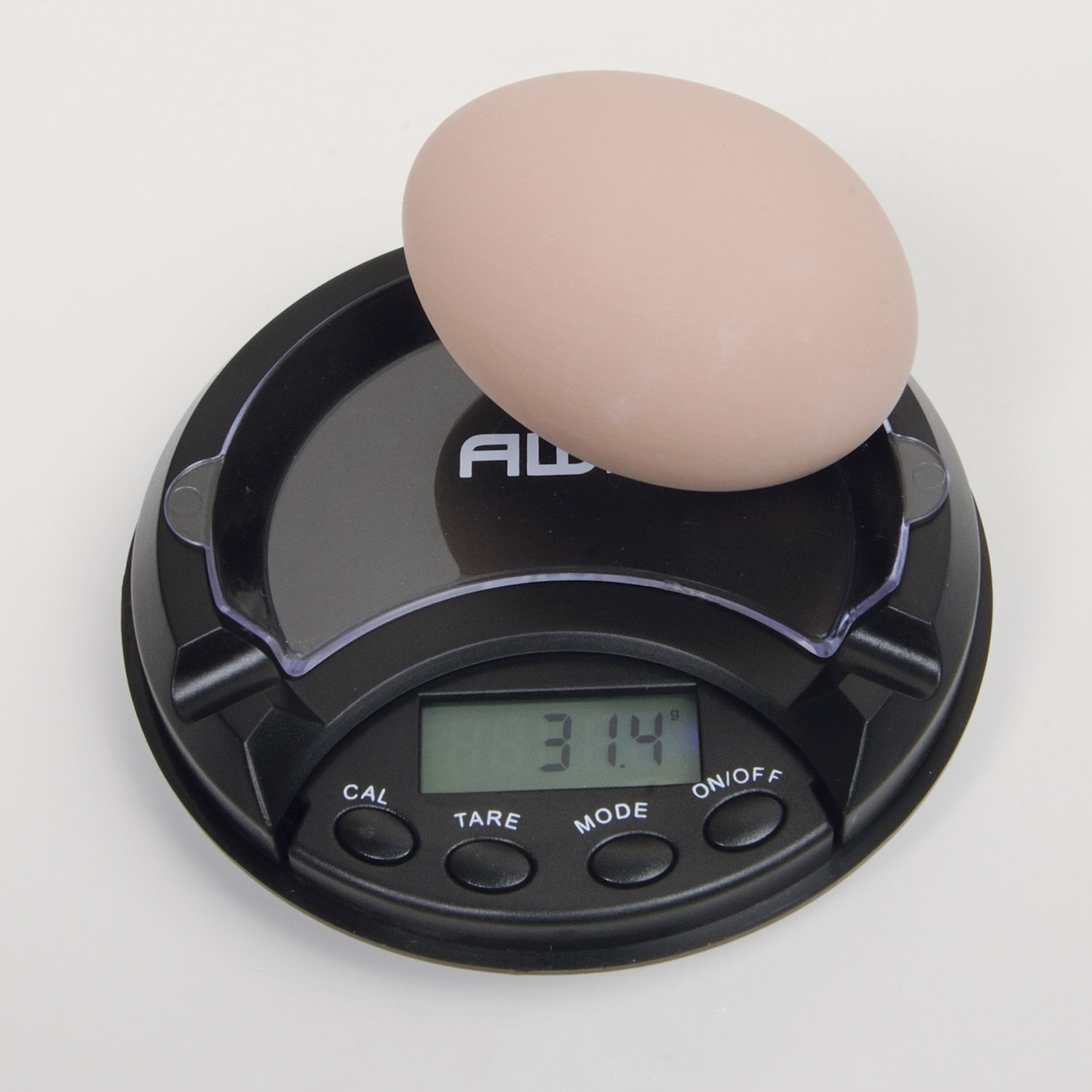How Much Does an Egg Weigh: Essential Guide for Cooking
Ever cracked an egg into a bowl and wondered just how much it weighs? Whether you’re perfecting a recipe or tracking your nutrition, knowing the weight of an egg can make all the difference. Eggs, a breakfast staple and an essential ingredient in countless dishes, come in various sizes, each with its specific weight range.
From the petite peewee to the hefty jumbo, eggs can weigh anywhere from 1.25 ounces to 2.5 ounces. Large eggs, often the go-to in recipes, weigh about 2 ounces each. Understanding these weight differences helps ensure your culinary creations turn out just right. When a recipe calls for a specific number of eggs, knowing their weight can help you achieve the perfect balance of ingredients.
So, the next time you’re in the kitchen, consider the weight of your eggs. It might just be the secret to elevating your cooking and baking to new heights.
Key Takeaways
- Egg Size and Weight Range: Eggs vary in size from peewee to jumbo, with weights from 1.25 to 2.5 ounces. Understanding these differences can help achieve precise results in recipes.
- Large Eggs Are the Standard: Large eggs, weighing about 2 ounces each, are the most commonly used size in recipes, making them the ideal reference point for culinary projects.
- Importance of Egg Grading: Grades (AA, A, B) reflect egg quality rather than size, impacting texture and appearance in dishes. Grade AA is best for recipes where quality matters.
- Egg Components by Weight: In a large egg, the yolk makes up about 30-33% of the weight, while the egg white is about 67-68%, influencing how you separate and use them in recipes.
- Converting Egg Sizes: Understanding how to substitute different egg sizes maintains recipe integrity when large eggs aren’t available, ensuring proper volume and consistency.
- Factors Affecting Egg Size: The age and breed of hens, as well as seasonal changes, influence egg size, with older hens typically producing larger eggs.
Understanding Egg Sizes
Egg sizes play a crucial role in both culinary and commercial contexts, determined by their weight rather than volume. When you comprehend how each size impacts your cooking outcomes, you enhance your ability to select the right eggs for various dishes.
Peewee to Jumbo: What Each Size Means
Eggs are classified into six distinct sizes according to their weight. Here’s a concise overview:
- Peewee: These are the smallest eggs, weighing under 43 grams. Rarely used in recipes, peewee eggs might surprise you with their tiny but nutrient-packed content.
- Small: Weighing between 43-49 grams, small eggs are more common but not typically featured in standard recipes, which often call for larger sizes.
- Medium: At 49-55 grams, medium eggs make frequent appearances in household kitchens and serve as a versatile option for various preparations.
- Large: The most widely-used size, large eggs weigh 55-64 grams. Recipes often assume you’re using large eggs, making them a kitchen staple.
- Extra Large: Weighing 64-71 grams, extra-large eggs can be used for recipes requiring more volume, such as quiches and frittatas.
- Jumbo: These eggs exceed 71 grams and are often used commercially due to their size, offering more of everything within each shell.
The Importance of Egg Grades
Egg grading reflects the quality and freshness, not size or weight, impacting your dishes. Familiarize yourself with the grades to ensure optimal results:
- Grade AA: Represents the highest quality, with firm yolks and thick whites. You might use these eggs for dishes where appearance and texture matter, such as poached eggs and sunny-side-ups.
- Grade A: Slightly lower in quality, these eggs have round yolks but more thin whites. They work well in general cooking and baking.
- Grade B: Lower quality with flatter yolks and watery whites, typically used in processed foods rather than home kitchens.
Determining Egg Weights
Understanding egg weights plays a crucial role in many recipes, especially in baking where precision is essential. Eggs come in various sizes, each with specific weight ranges that impact the outcome of culinary creations.
How Much a Large Egg Weighs
A large egg, a staple in countless recipes, falls under the range defined by the USDA as weighing between 55 and 64 grams. Typically, the average large egg weighs around 56-57 grams. In ounces, a large egg weighs about 2 ounces. If you’re measuring ingredients for a precise recipe, this is the standard size you’ll likely need to consider.
Weights of Egg Yolks and Whites
When assessing an egg’s weight, it’s helpful to know the breakdown between the yolk and the egg white (albumen). The yolk accounts for roughly 30-33% of the egg’s total weight. In a large egg, expect the yolk to weigh around 16.5-19 grams. The egg white, more voluminous, comprises about 67-68% of the total weight, translating to about 37-40 grams for a large egg. Knowing this distribution can assist in recipes requiring separation of egg components, ensuring the right texture and consistency in your dishes.
Understanding these aspects of egg weights not only aids in accuracy for specific recipes but also expands your culinary skills by allowing for ingredient modifications and substitutions. Consider using these weight distributions in practice to refine your cooking and baking results.
Factors Influencing Egg Size
Understanding the factors that influence egg size can enhance your culinary skills, providing insights into why eggs vary in weight and size.
Impact of Age, Breed, and Season
Egg size primarily fluctuates based on the hen’s age, genotype, and environmental conditions. Older hens lay larger eggs as they age. For example, young pullets often produce smaller eggs, while mature hens regularly lay medium to large eggs. The breed plays a significant role since genetics determine roughly 40% of egg size variation. Breeds like Jersey Giants and Orpingtons tend to lay larger eggs due to their larger body size. Seasonal factors, including changes in lighting and temperature, also affect egg production, causing subtle variations in egg size.
Standardization of Egg Sizes
Egg sizes are standardized by weight, not volume, ensuring consistency in culinary contexts. The standard size categories range from peewee (under 43 grams) to jumbo (over 71 grams). Large eggs, the most common in recipes, weigh between 55 and 64 grams. By standardizing, the USDA permits larger eggs to be packed in cartons labeled for a smaller size if uniformity within the carton is maintained, which sometimes results in eggs appearing bigger than expected. Understanding this standardization helps you select the right egg size for your cooking needs, ensuring precise recipe execution.
Practical Considerations
Understanding the weight and size of eggs is crucial for precise recipe execution, especially in baking where accuracy is key.
Converting Egg Sizes for Recipes
Recipes often call for large eggs, but you might have different sizes available. Knowing how to substitute can make a dish successful when exact sizes aren’t an option. For one large egg (2 ounces, 57 grams), you can use:
- 1 Jumbo egg (2.5 ounces, 71 grams)
- 1 Extra Large egg (2.25 ounces, 64 grams)
- 1 Medium egg (1.75 ounces, 50 grams)
- 1 Small egg (1.5 ounces, 43 grams)
- 1 Peewee egg (1.25 ounces, 35 grams)
If a recipe requires multiple large eggs and only smaller ones are on hand, adjusting quantity is necessary. For example, replace two large eggs with three small ones to maintain the correct volume.
Measuring Eggs in Ounces and Cups
Egg weight variation impacts measuring. Weighing provides accuracy and consistency. For large eggs, this is approximately 2 ounces per egg. Weighing each component separately ensures precision, especially in intricate recipes.
Eggs in a cup measurement also face similar adjustments:
- 6 small eggs (1 cup)
- 5 medium eggs (1 cup)
- 5 large eggs (1 cup)
- 4 extra large eggs (1 cup)
- 4 jumbo eggs (1 cup)
Use scales to weigh eggs if precision is paramount, especially if results seem too wet or dry. Accurate conversion helps maintain dish integrity, ensuring every bake meets expectations.
Conclusion
Understanding the weight and size of eggs is crucial for achieving the best results in your cooking and baking adventures. By familiarizing yourself with the different egg sizes and their respective weights, you can ensure that your recipes turn out as intended. Remember that large eggs are the standard in most recipes, but knowing how to substitute with other sizes can be a valuable skill. Keep in mind that factors like the hen’s age, breed, and environmental conditions can influence egg size, so consistency is key. Armed with this knowledge, you’re well-equipped to tackle any recipe with confidence and precision.







